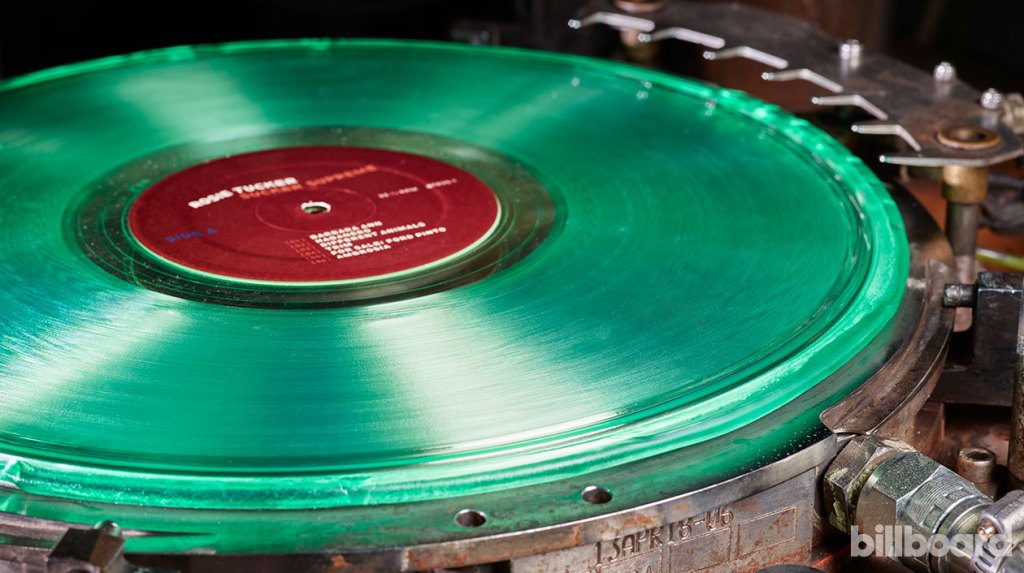A proven revenue model in the theater and concert world is to price front seats and sell out early to the act's dedicated fans, then fill the house with cheap seats to optimize cash flow and reduce risk. Recorded music does the opposite: when an album drops, an artist's music is instantly available on all streaming services to every subscriber, leaving no room for die-hard fans to choose the pricier options themselves.
In gaming, at least since his time Minecraftsuperfans have been given early access to titles before they are published, generating revenue, feedback and word of mouth.
Movie studios use a similar model, charging for early access to theatrical screenings of major films about 45 days before they are widely available for streaming (usually first as a purchase and then as a rental). Apple used this windowed approach seeking to maximize revenue by Killers of the Flower Moon and Napoleonas does Amazon Prime with Air.
The record industry seems to have lost the memo. Aside from an early failure testing streaming exclusives on the artist-owned Tidal service, it doesn't use a windowed approach. This is a huge missed opportunity.
One way for recorded music to open up a more lucrative future based on superfans is to turn to one of the icons of the past: vinyl records. Rapper Travis Scott understood this, pressing 500,000 records of the double vinyl. Utopia album and making it available the same day he put it on streaming services. Scott has now sold most of them at $50 a pop, taking the risk and reaping the reward. What if he had released those analog vinyl records before was the album released digitally on streaming? Had he sold half the stock before the digital release, he would have grossed $12.5 million, perhaps making $10 million of that in profit, all while supercharging the marketing machine as all those super fans paraded their precious product to their friends.
A limited edition pack of Scott's Utopia on red vinyl.
Courtesy of Cactus Jack Records
Like The Boy Who Cried Wolf, we've been told time and time again that the vinyl resurgence is a fad, not a trend. However, for 18 consecutive years it has continued to exceed expectations. Over the last three years, it has accounted for over a tenth of all label revenue from the consumer, and this year labels will rake in over a billion dollars worth of vinyl, with no signs of slowing down.
Analog is also taking off in book publishing, as print books now outsell their digital counterparts 4-to-1 and bookstores are growing. Not long ago this would have seemed unthinkable.
Now let's look at where vinyl meets the road: math. While streaming is a music industry success story, it's also a commercialization story – selling more and more for less and less. Back in 2001, Rhapsody charged $9.99 to access a 15,000 song catalog. today Spotify et al they charge about the same for 120 million songs. Add in the impact of the family plan, where typically three people share a $15 per month account, and the value of one account user has dropped by 10%, and that's before adjusting for inflation. Vinyl reverses this trend. Since 2016, retail prices for platters that matter have increased by 30%.

Will Page
Angelica Bette Fellini
In order for a streamer to provide a label with the same value from an album as a vinyl buyer, a customer would have to press play over 5,000 times — or stream for nearly two weeks without sleep. Let's be clear about what this comparison really means: consumers are paying more for the same on vinyl, but paying less to access more with streaming. So if you want to hedge your intellectual property bets, you better put some chips on black and spin the wheel to 33 1⁄3.
Management guru Peter Drucker once said that “the customer rarely buys what the company thinks it's selling.” In the case of vinyl, more than half of buyers don't even own a turntable. So they don't buy the music – they buy merchandise that gives them a sense of identity and connection to the artist. With flow, you simply press your thumb against a piece of glass. Owning, owning and viewing a curated vinyl record with unique artwork has a much deeper meaning for a fan.
There are similar conundrums about vinyl's relationship with the creator. Remember streaming released the album – so you could have nine songs on a killer Number One record, but not get paid for those songs. The book Axis of rotation showed that Gotye's 2011 debut Manufacture of mirrors was the most streamed album of the year, but fell short of one hit: Someone I used to know. Streak hit and this record falls from the Top 100.
Vinyl captures more in the value unit — no fan can realistically stream your $30 album — and all songs get paid the same. Saturday night fever The soundtrack is arguably the biggest vinyl success story in history. but Ralph MacDonald's dark track “Calypso Breakdown” from this album earned the same as the Bee Gees track “Staying Alive” for every album sold. Investors in music catalogs should take note: supporting more vinyl releases is aimed at monetizing the vast majority of songs that are currently owned and make almost no money from streaming.
Vinyl is not without its challenges. Measuring the size of his remarkable ongoing success story is just one. Recent changes by Luminate, the industry's primary source of data, eliminated 40% of measured volume overnight, moving from expanding the size of the market to counting only what they choose. This is fixed and will reassure people who are upset, but the point remains, there is a lot more vinyl being bought than Luminate measures.

Fred Golring
Natasha Fredkin
There are other challenges. If counting brick and mortar retail is difficult, what about tracking physical online retail sales that is based anywhere but serves everywhere? London-based Juno is around the corner from the famous Camden Market and serves not only the UK and the US, but Brazil and China alike. Add in burgeoning pre-owned platforms like Discogs and you get the sense that the true size of the market is much larger than we're led to believe.
This brings us back to the possibility of the first advantage of vinyl. By the latter part of 2023, vinyl was experiencing a huge production backlog and demand was far outstripping supply even for the biggest artists. Many vinyl albums were released many months after their original release.
The rise of small vinyl plants has greatly reduced lag time and backlog. Travis Scott used the Poland-based team at Pressing Business to produce 500,000 double-disc, multi-cover, multi-color Utopia album in just five weeks, allowing for the highest vinyl debut for a hip-hop artist since records began in 1991. Coupled with streaming, the album stayed at #1 for five weeks.
The record industry should start selling and delivering vinyl as an early access opportunity, not an afterthought. Pre-streaming vinyl releases can create rarity, exclusivity and thus additional revenue from superfans who will have the opportunity to be the first to hear the music or own a limited edition. Artists will also benefit creatively, as superfans are the ones most likely to truly appreciate the album as a piece of work, curated as the artist intended (and, many would argue, better sounding). Once music is thrown into the ocean of streaming, it's often lost at sea, and everyone involved loses something valuable. It's time for the record industry to embrace vinyl's first-movement advantage hiding in plain sight.
Will Page is its author Axis of rotation and former chief economist of Spotify and Fred Goldring is an entrepreneur, entertainment lawyer and co-founder of Pressing Business.



